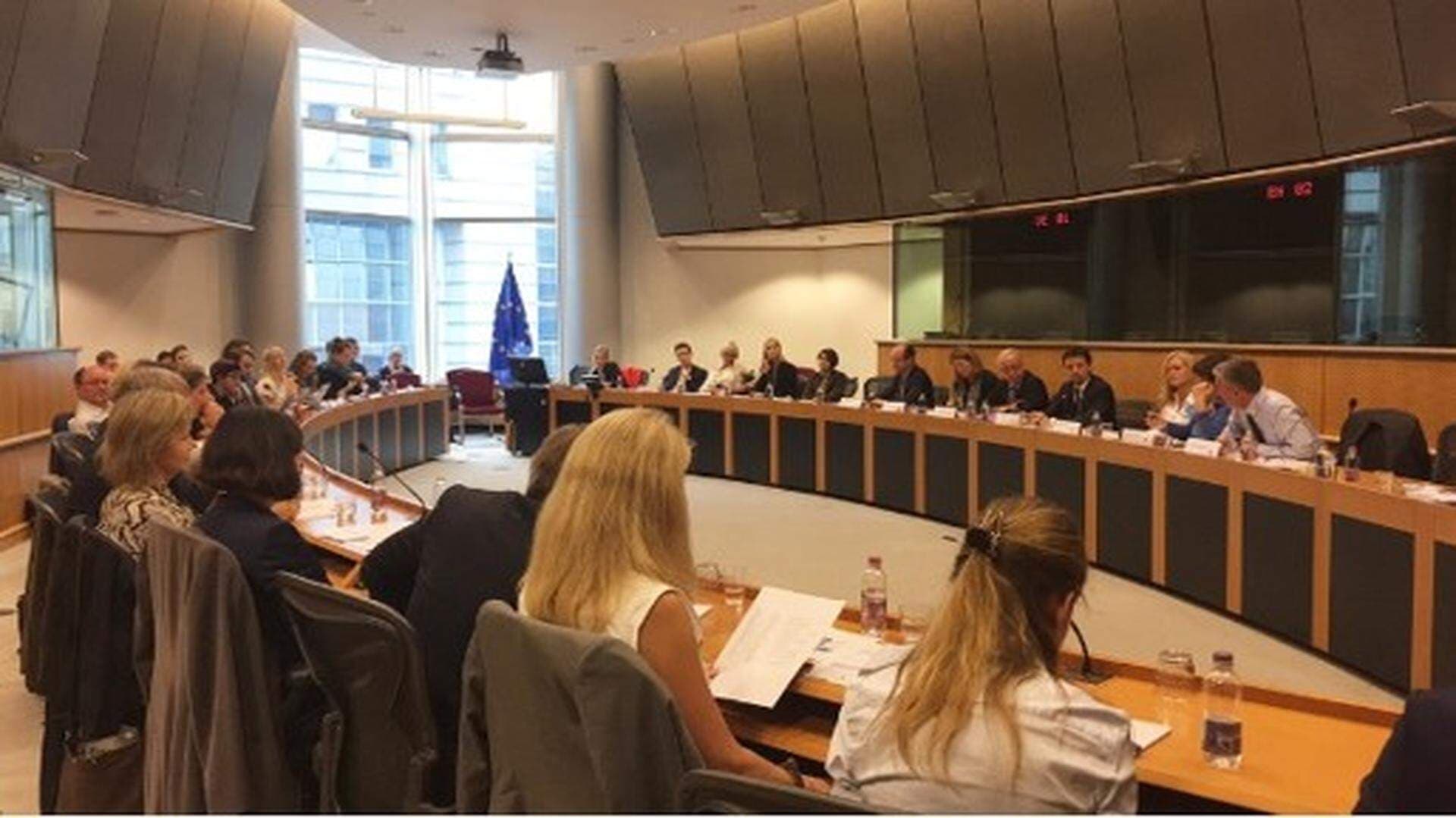Nordic labour market models and the Social Pillar – complementary or colliding?
The Nordic employer organizations organised a seminar in Brussels where invited representatives from the EU institutions, industry and trade union discussed their views on the Social Pillar taking into account the Nordic labour market models.

Can new social rights – as proposed in the Social Pillar – really foster sustainable growth and jobs in Europe? Is the approach of the EU Commission compatible with the already well-functioning Nordic labour markets and social dialogues? Is the cause of social and economic divergences in Europe due to a lack of social regulations and rights or is it found in a lack of competitiveness and structural reforms?
To discuss these topics, the Nordic employer organizations organised a seminar in Brussels where invited representatives from the EU institutions, industry and trade union discussed their views on the Social Pillar taking into account the Nordic labour market models. Among the panellists were Ruth Paserman, Deputy Head of Cabinet, European Commission; Ambassador Vibeke Pasternak Jørgensen, Permanent Representation of Denmark to the EU; Margrethe Husebø, Head of Employment Law and Employee Relations Sector, Statoil ASA; Markus Penttinen, Head of International Affairs, Akava; Gunnar Hökmark, Member of the European Parliament, EPP Group and Morten Løkkegaard, Member of the European Parliament, ALDE Group. The seminar was moderated by Jorge Valero, journalist.
Ruth Paserman started the discussion by stating that the idea behind the Social Pillar is to have a fitness check of the current legal framework, to identify and fill existing gaps to meet future social challenges. Gaps should be counteracted by means of access to adequate social protection, equal opportunities and gender balance. Paserman furthermore stated that the 20 principles accompanying the Social Pillar could be tools for this progress however, social partners’ voice is important since these principles are foremost considered national competence which is why the EU Commission also has made the offer to go into dialogue on this issue.
– There is no interest in creating a common European labour market model, but some things can be improved and the social partners play an important role in the social legislative work, Paserman highlighted.
Vibeke Pasternak Jørgensen underlined that there is a need for reform to future-proof the labour market, but that the Nordic approaches works smoothly characterizing less governmental interventions leaving social partners to work out the practical arrangements and agreements. For this reason, the Danish government would like to emphasize that the Social Pillar is not a legally binding document but plays a role in setting out the political vision in Europe.
– The Social Pillar will be supported in the Council, though it is vital to support the division of competences. It is essential that the Social Pillar does not collide with national – and Nordic – models, said Pasternak Jørgensen.
Gunnar Hökmark asked whether there is a European social model, in the light of the various labour market models taking place in Eastern Europe, Southern Europe as well as United Kingdom and Ireland. The Nordic countries have their own too. Figures show that the situation is very different in terms of employment rate, wages, workers participation, gender balance and childcare benefits.
– I am positive that 28 Pillars are both more stable and effective than one joint Pillar, since they are based on existing conditions and traditions in each Member State. Also, European legislation is about finding compromises, we cannot propose a European track if we are not prepared to compromise, Hökmark put forward.
Hökmark furthermore stated that there is a need for common legislation of the EU internal market, but what regards social legislation, a compromise will not satisfy anyone due to the asymmetric reality of family politics.
Morten Løkkegaard stressed that the EU is all about solidarity, so the question is how to practice solidarity in the Union. Just because some have different views on the Social Pillar it does not imply that they are not solidary. In Denmark, we have much to thank the trade unions for, since social partners are able to have a constructive dialogue. Worth noting though, is that one model does not fit all due to cultural, political and economic differences.
– One must simply get its own house in order to create social welfare as well as solidarity. Hence, reforms at national level must take place to be able to increase social integration and combat inequalities. The Social Pillar is not the answer.
Margrethe Husebø discussed the Norwegian model from a business perspective and stressed that if new principles, directives or regulations interfering with the national models were settled, the incentives to create good solutions for businesses and employees are markedly reduced. There is a significant risk that we will not find solutions suited for rapid shift in market and economic conditions if more bureaucracy is put on employers. For example, we know that many companies in the oil service sector have agreed with trade unions during the last years to lower wages for workers on temporary basis. This has been necessary to avoid redundancies and in worst cases bankruptcy. One simply must take into account the national circumstances.
Markus Penttinen highlighted that Nordic trade unions will always be in favor of reforms necessary to enable a flexible development of the labour market to ensure future welfare. But for the internal market to be able to work properly and bring growth to all countries, some common rules are needed. We named the Social Pillar to counter the development with an aggressive growing populism in Europe.
– The Social Pillar will not lead to a harmonization of the labour markets in the EU. It is a question about minimum standards, said Penttinen.
The Nordic employer organizations have moreover written a joint statement on the Social Pillar.